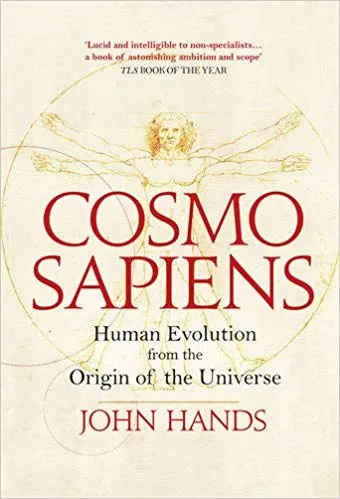At alandmark international conferencerecently [7-9 November] organised by the Royal Society and the British Academy, several speakers called for a revision of the theory of biological evolution that has been largely unquestioned in the UK and the USA for around 70 years.
This paradigm - a combination of Darwinism, population genetics, and what Francis Crick called the central dogma of evolutionary biology - is known as NeoDarwinism, or the Modern Synthesis. Popularised byRichard Dawkinsin his bestselling 1976 bookThe Selfish Gene, it is a statistical model validated not by observation or experiment, but by simplistic games models borrowed from 1940s economics.
Those speakers drew attention to several empirically supported mechanisms, discussed along with others inCOSMOSAPIENS Human Evolution from the Origin of the Universe. Some of these were only identified recently, but others have been known for many years and were ignored, dismissed and even suppressed by the Anglo-American biology establishment who had come to treat NeoDarwinism as an article of faith.
The defining tenets of NeoDarwinism are:
- Random gene mutations cause traits in individual life forms that enable successful Darwinian competition for survival and reproduction;
- these random gene mutations spread through a population’s gene pool by sexual reproduction;
- these mutations gradually accumulate in the population’s gene pool over tens, if not hundreds, of thousands of generations, until that population is transformed into a new species;
- information flows in one direction from a gene to an organism.
No observational or experimental evidence supports the evolution of a new species by this NeoDarwinian mechanism. On the contrary, Darwinian competition causes the most widespread biological phenomenon, thedestructionof species.
Adherents of this gene-centric belief dismissed the 98 per cent of the human genome that does not consist of genes as ‘junk DNA’. Conversely, amajor 2012 studyshows that some 80 per cent of this ‘junk DNA’ comprises collaborating networks that regulate how and when particular genes function.
Collaboration, too, in various ways characterises most of the alternative mechanisms that can rapidly generate a new species.
Symbiogenesis, for example, is the process by which two different single-celled organisms, such as bacteria, collaborated for their mutual survival and then merged to form a third, much more complex organism, a member of a new species. Serial symbiogenesis explains how the first, very simple, lifeforms on Earth evolved into the vast variety of species from plants to animals.
Horizontal gene transfer involves an organism immediately acquiringDNA, often from an organism of a different species, that creates a third kind of organism with novel characteristics. Around 80 per cent of the genome of most species on the planet are generated this way, rather than through Darwin’s vertical descent with modification down tens of thousands of generations.
Whole genome duplication during reproduction creates an organism with additional copies of the entire genome of a species in its cells, causing a majorevolutionof that species. This was known to be widespread among fish and amphibians. Evidence has accumulated that it also occurs in reptiles and rats. Moreover, studies of the human genome strongly suggest that it occurred at least twice in the human lineage.
Evidence from systems biology shows that, instead of genes directing the evolution of organisms, the whole system of genomes, cells, tissues, organisms and their environment is a dynamic interactive whole with no privileged level of causality for evolution.
It was fitting that the conference was held at theRoyal Society, whose mottoNullius in Verbameans ‘accept nothing on authority’. Science progresses only by discarding theories that don’t fit the evidence, and developing new theories that do explain it.
While some speakers defended the current paradigm, others called for an extension of the NeoDarwinian evolutionary synthesis to accommodate these alternatives. However, such mechanisms contradict NeoDarwinism. You can’t extend something that is broken. After 70 years it is time to move on, and use ideas supported by evidence to develop a new paradigm for evolutionary biology.

